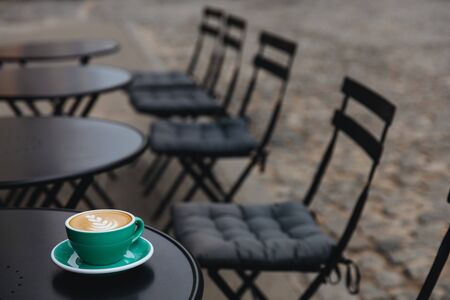Introduction: Sipping on Local Flavor
Step into any independent café in America, and you’ll instantly sense that you’re experiencing more than just a caffeine fix—you’re being welcomed into the heartbeat of a neighborhood. These local coffee shops are cultural ambassadors, serving up not only expertly brewed lattes and pour-overs but also the unique spirit of the community around them. The art on the walls might showcase a local artist, while the pastries in the display case could be baked from recipes passed down through generations within the town. Unlike their franchise counterparts, which often focus on consistency and brand identity, independent cafés thrive by weaving themselves into the fabric of their city or town. They reflect the stories, tastes, and values of their regulars—making each cup a true taste of home. In this way, independent cafés become gathering spots where locals feel seen and visitors can sample authentic local flavor, turning every sip into an invitation to connect with the community itself.
Community Connections and Neighborhood Identity
When you step into an independent café in any American city—whether it’s a cozy corner in Portland or a sunlit spot in Austin—you’re not just grabbing coffee; you’re experiencing a slice of the neighborhood itself. Unlike franchises, which often follow a universal blueprint, indie cafes thrive on their close ties to the local community. They hire baristas from down the street, source pastries from local bakeries, and decorate walls with art by neighborhood creatives. Every detail—from the playlist to the mugs—echoes the personalities and traditions that make each area unique.
Independent cafes often serve as informal gathering spots where locals catch up, share news, and organize events. They might host open mic nights spotlighting local talent or collaborate with nearby farmers for seasonal ingredients. In these spaces, the line between customer and neighbor blurs; regulars are greeted by name, and newcomers are welcomed into the fold. These relationships foster a sense of belonging and pride that franchises struggle to replicate, simply because their model prioritizes consistency over adaptation.
| Independent Cafes | Franchises | |
|---|---|---|
| Community Events | Host neighborhood gatherings, art shows, and local markets | Rarely organize locally-focused events |
| Décor & Atmosphere | Reflects local history, artists, and culture | Standardized design across all locations |
| Sourcing Products | Partners with nearby farmers and vendors | Centralized sourcing dictated by corporate HQ |
| Customer Relationships | Personalized service; baristas know regulars’ names and stories | Transactional interactions based on company protocol |
This deep-rooted connection gives independent cafes their flavor—one that’s shaped by ever-evolving neighborhood stories rather than corporate memos. The result is a living, breathing space that mirrors the energy of its surroundings. While franchises offer familiarity wherever you go, indie cafes are cherished for how they reflect and uplift the communities they call home.

3. Menus That Tell Local Stories
Walk into an independent cafe in any American city, and you’ll often find a menu that reads like a love letter to the neighborhood. Unlike franchises, which rely on tried-and-true recipes and global consistency, indie cafes thrive on weaving local culture directly onto their menus. These coffee shops source micro-roasted beans from regional farms, highlight seasonal fruits from nearby markets, and craft pastries inspired by family recipes or the city’s immigrant heritage. From New England maple lattes to Southwestern chili-infused mochas, each drink becomes a mini-exploration of place. The owners chat with farmers at weekend markets, experiment with what’s fresh this week, and respond to regulars’ requests for nostalgic hometown flavors. This ever-evolving approach lets independent cafes stand out as storytellers—every dish or cup not only satisfies hunger but also shares a slice of local life. In contrast, franchise menus are meticulously standardized; while that ensures reliability for travelers craving the same vanilla latte from coast to coast, it rarely captures the spirit of a specific block or borough. The result? Indie cafes create menus that invite customers on a journey through local tastes and traditions, offering an authenticity big brands just can’t duplicate.
4. Design, Atmosphere, and Local Aesthetics
Step into an independent café in any American city, and you’ll quickly notice something distinct: the design and vibe often feel like a love letter to that specific neighborhood. Unlike franchises, which typically follow a uniform blueprint, indie cafés lean heavily on local flavor to craft their spaces. This difference is more than cosmetic—it’s a sensory celebration of community roots, history, and evolving street culture.
Independent café owners often collaborate with local artists, tap into historic architecture, or use reclaimed materials from nearby landmarks. The result? An atmosphere that feels not just inviting, but deeply familiar—like a cozy living room made for locals by locals. For example, a Portland café might feature murals inspired by the city’s music scene or showcase vintage furniture sourced from local thrift shops. Meanwhile, a Miami spot could be bursting with tropical colors and Cuban tile work, echoing the city’s vibrant Latin heritage.
Let’s take a closer look at how independent cafés differentiate themselves from franchises when it comes to design and aesthetics:
| Element | Independent Cafes | Franchises |
|---|---|---|
| Interior Design | Reflects neighborhood history; custom art installations; unique furniture choices | Standardized layouts; corporate branding; identical furnishings nationwide |
| Atmosphere | Homey, eclectic, locally inspired music playlists | Predictable ambiance; background music selected by HQ |
| Aesthetic Details | Murals by local artists; upcycled décor; community bulletin boards | Minimal customization; generic wall art; branded merchandise displays |
| Connection to Street Culture | Café doubles as gallery for local creators; hosts pop-up events; supports neighborhood causes | Rarely involved in grassroots initiatives; events are nationally programmed if at all |
This homegrown approach doesn’t just make each café Instagram-worthy—it gives regulars a sense of belonging. When the art on the wall reflects the block outside and baristas know your name (and maybe your order), you’re not just buying coffee. You’re participating in the ongoing story of your city—one cup at a time.
5. The Human Touch: Staff, Service, and Regulars
Step into an independent café in any American city and you’ll notice the difference immediately: the baristas aren’t just employees—they’re neighborhood personalities. Unlike franchises, where scripted greetings and uniformed efficiency are the norm, indie coffee shops thrive on a more personal vibe. Here, the staff often know your name, your go-to order, and maybe even how your week’s been going. They remember if you like extra foam or if you’re pulling an all-nighter with a double shot. This friendly familiarity is more than customer service; it’s about crafting genuine connections rooted in local culture.
Independent cafés become what sociologists call a “third place”—a warm middle ground between work and home. It’s a concept that feels particularly American: everyone is welcome, but everyone is also recognized as unique. Baristas chat with regulars about local happenings, sports scores, or upcoming art shows. They might display community flyers or host open mic nights that celebrate neighborhood talent. These small gestures reflect the surrounding culture and shape the daily rhythm of the café.
Unlike their franchise counterparts—where turnover can be high and interactions feel transactional—independent café teams tend to stick around longer, building real friendships with customers over months or even years. These relationships add layers of authenticity to each visit, making every cup of coffee feel like an invitation to stay a little longer. That human touch doesn’t just serve caffeine; it nurtures a sense of belonging that chains can rarely replicate.
6. Challenges & Resilience: Navigating Local Economics
Independent cafes in the U.S. are no strangers to economic headwinds. From the gentrification reshaping neighborhoods, to unpredictable rent hikes and fluctuating local demand, these small businesses must weather storms that franchise giants can often simply absorb. When a tech boom floods a city with new residents or a beloved historic district faces redevelopment, it’s usually the indie coffee spots—those “third places” for locals—that feel the squeeze first.
Unlike their franchise counterparts, which rely on national resources and playbooks, independent cafes have to be scrappy and creative. They’re nimble, able to adjust their menus overnight to feature a neighbor’s bakery or respond to customer requests for vegan pastries. If downtown foot traffic dries up, an indie shop might quickly shift to hosting open mics or pop-up markets with local artists, transforming challenges into opportunities for deeper community engagement.
This agility is both a necessity and a cultural asset. Where franchises stick to corporate policies, independent cafes tap directly into local tastes and trends—sometimes even predicting them. It’s not uncommon for an indie barista in Portland or Austin to experiment with seasonal ingredients before major chains catch on months later. These inventive pivots aren’t just survival tactics; they’re how local culture continually reshapes what’s on offer, keeping the cafe scene vibrant and relevant.
Yet, resilience doesn’t mean invulnerability. The rising cost of doing business—especially in trendy urban corridors—forces tough decisions about pricing, sourcing, and staffing. But because these challenges are felt personally by owners who live in the same neighborhoods as their customers, there’s often a willingness to adapt rather than relocate or close up shop entirely. By being woven into the fabric of their communities, indie cafes can ride out economic waves with more flexibility than a distant corporate chain ever could.
7. Conclusion: Brews Rooted in Place
In the end, what sets independent cafes apart from their franchise counterparts is their deep-rooted connection to local culture. Every neighborhood coffee shop is a living reflection of its surroundings—its people, traditions, and evolving tastes. From the playlist humming in the background to the handwritten menu scrawled on a chalkboard, these details breathe life into each space and make every cup of coffee uniquely tied to its community. When you walk into an indie cafe in Portland or Atlanta or Minneapolis, you’re not just grabbing caffeine—you’re tasting a story that’s been steeped locally, shaped by hands that know the neighborhood by heart. This authenticity can’t be replicated by a corporate template; it’s built one small gesture, one friendly conversation, and one meticulously crafted brew at a time. So next time you sip at your favorite local spot, remember: you’re not just enjoying coffee, but a flavor of place—a blend only found right there, where city spirit and barista artistry come together to create something truly singular.

